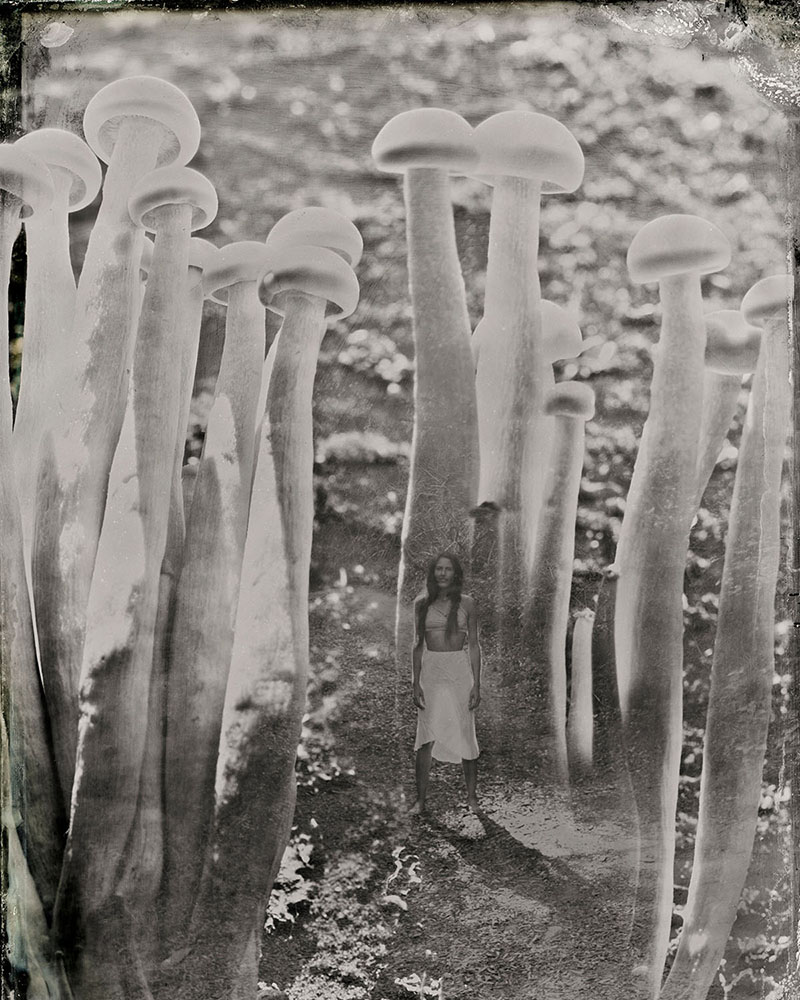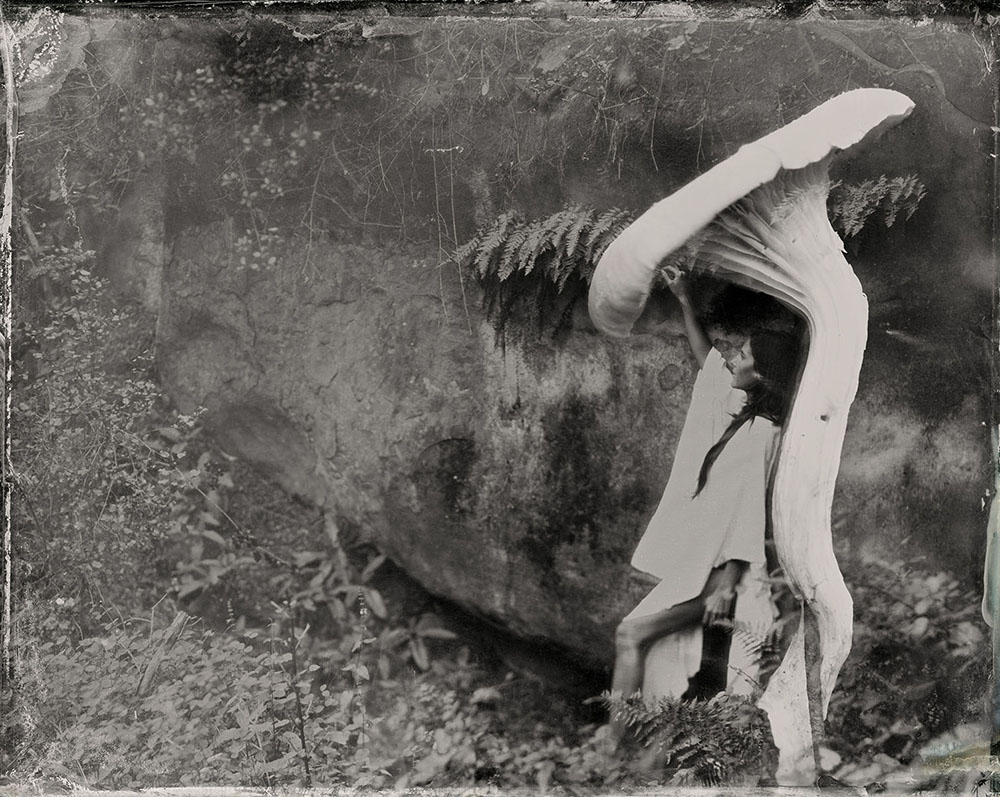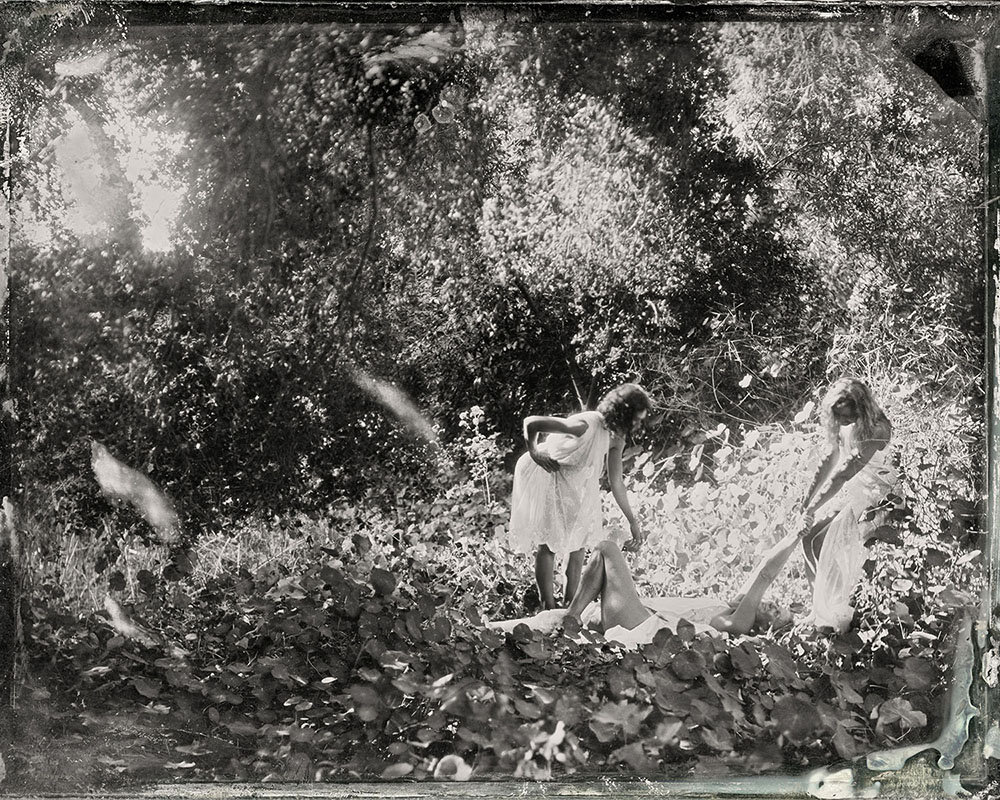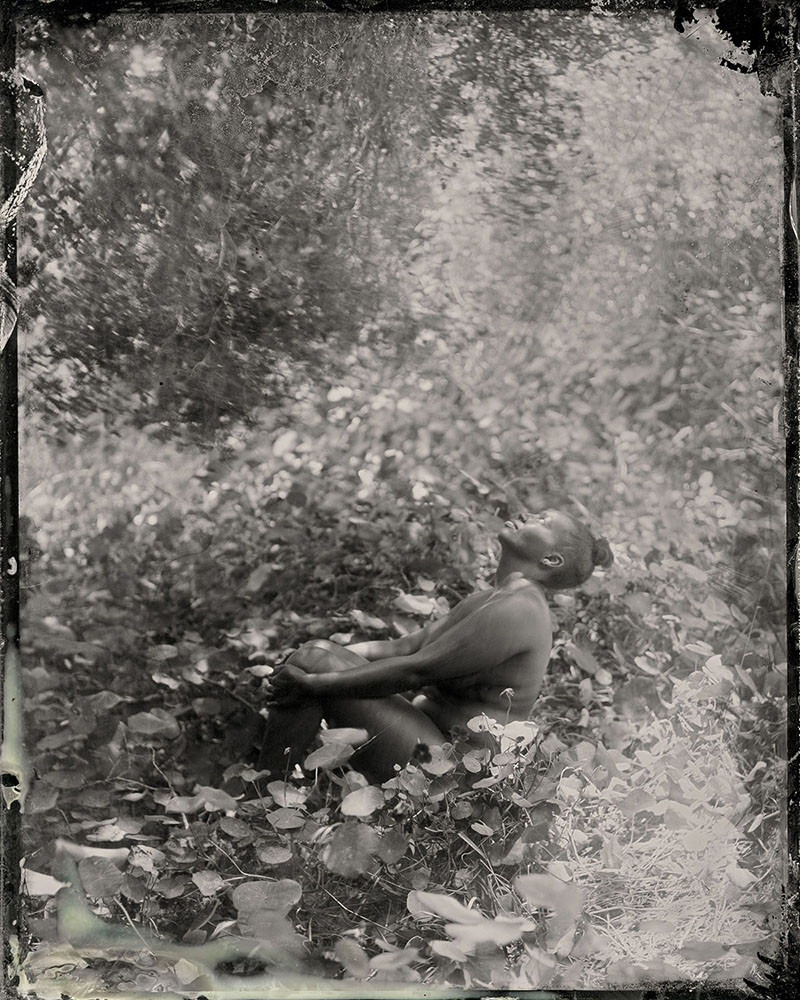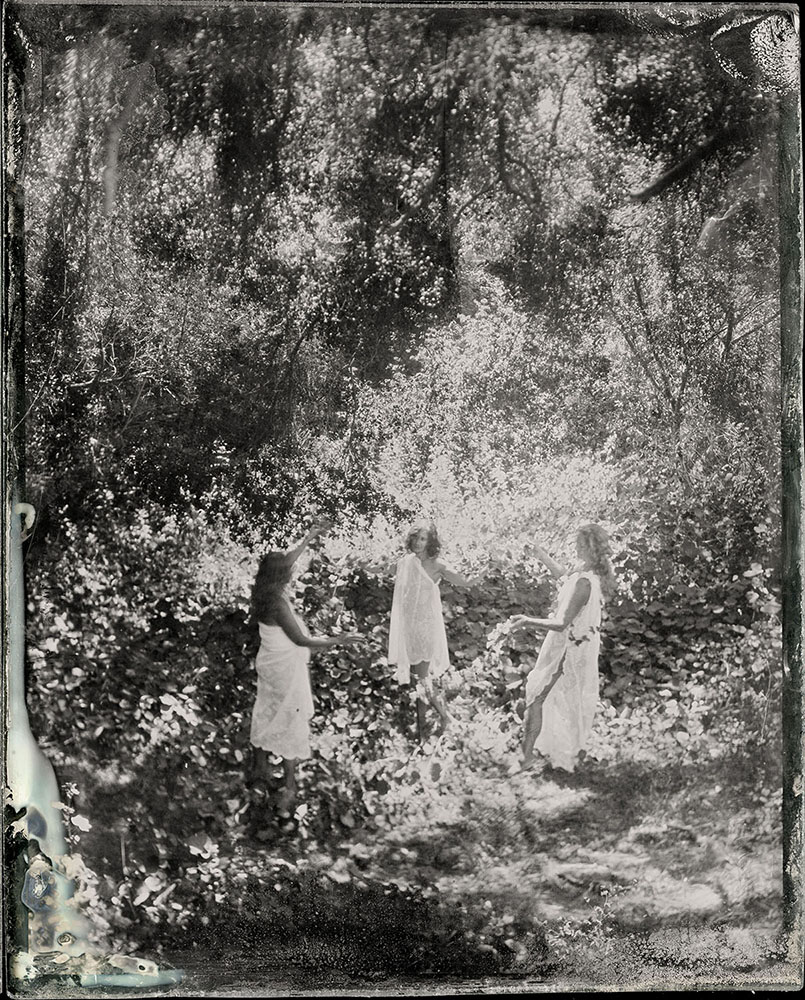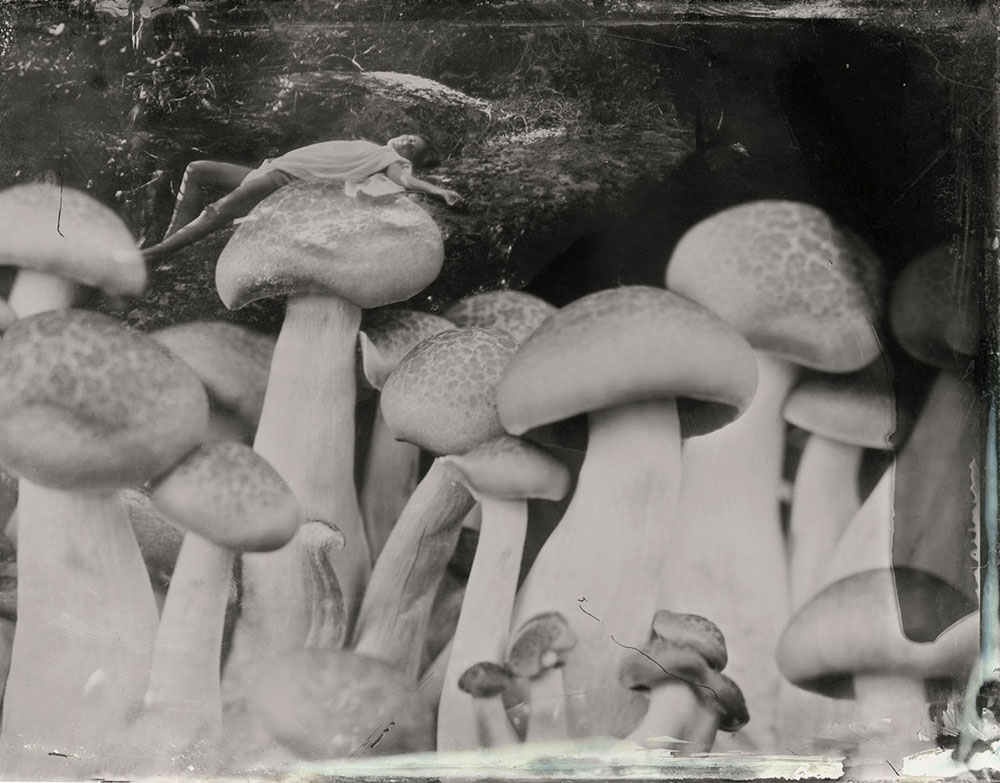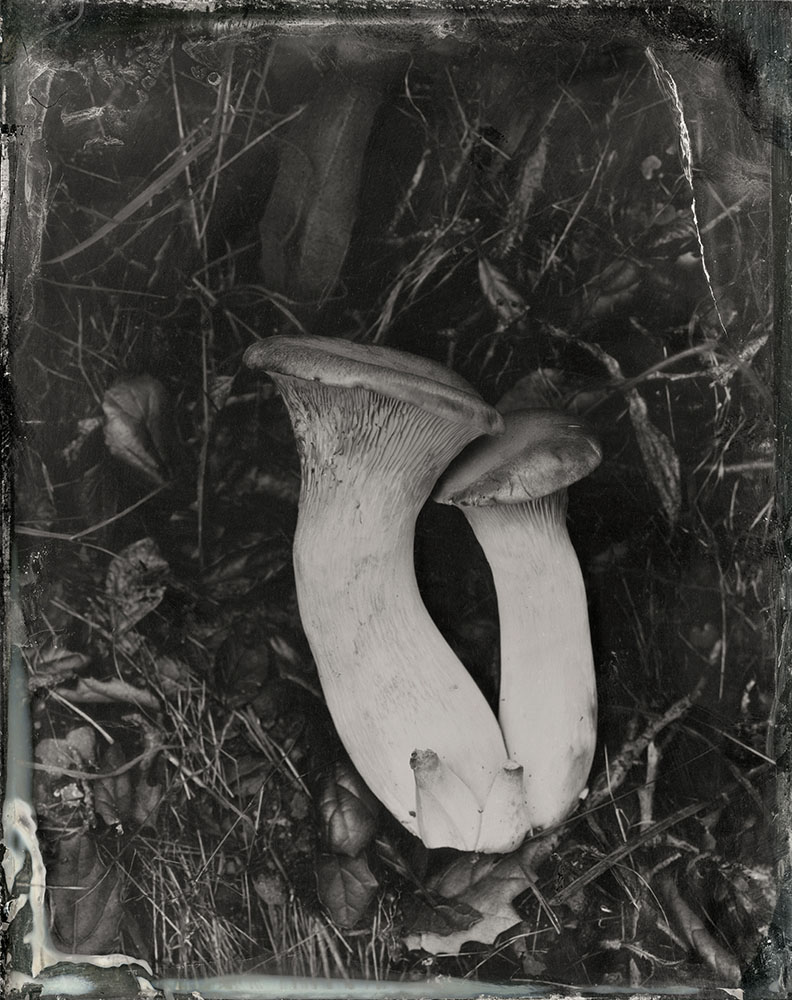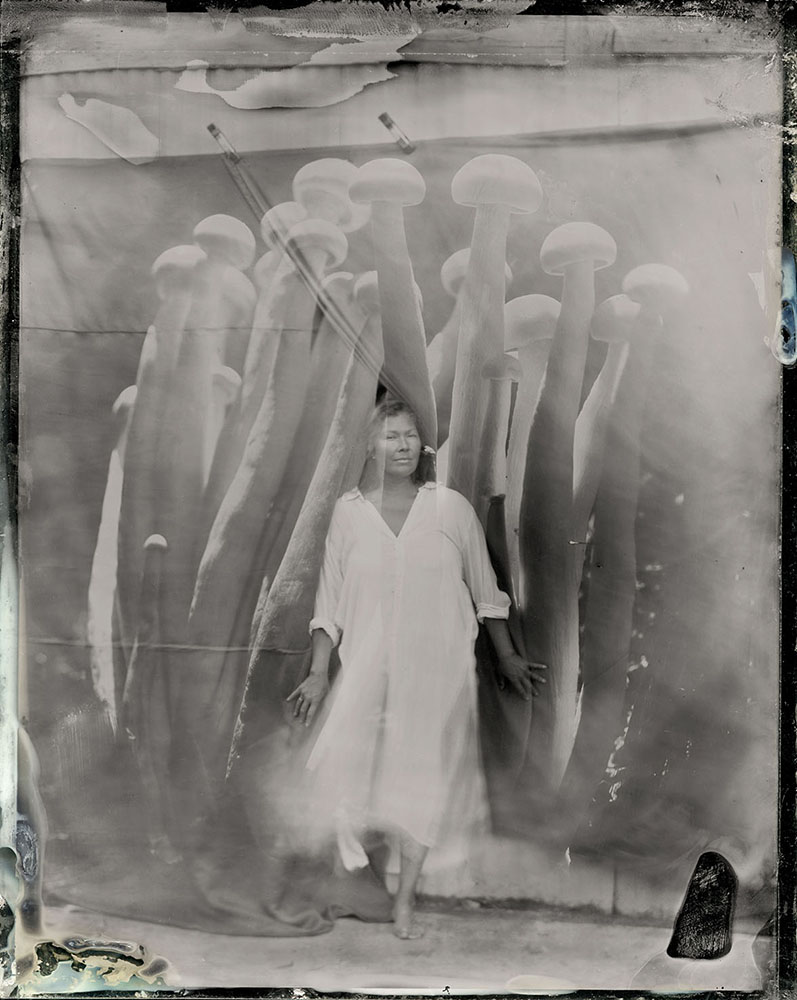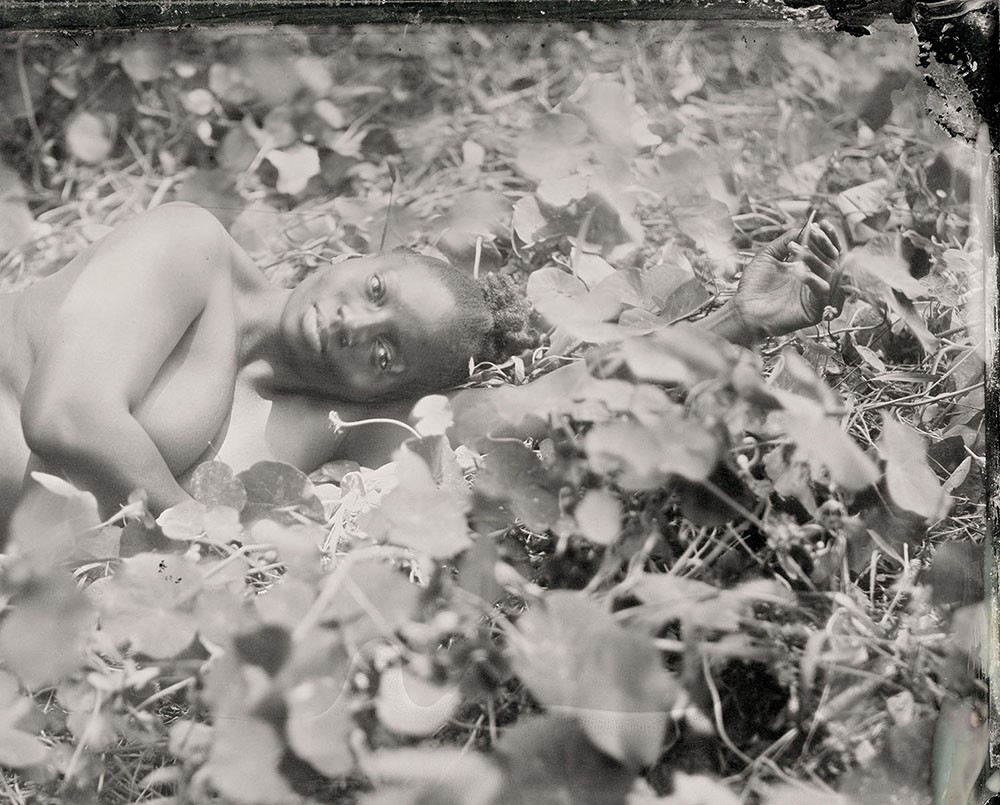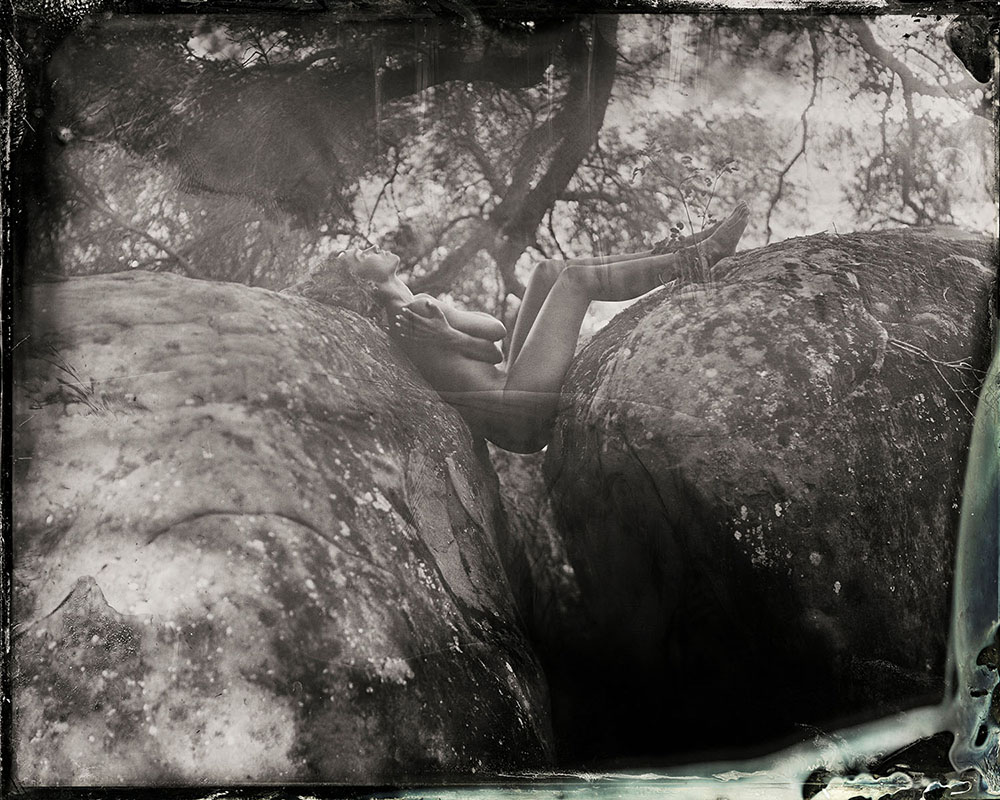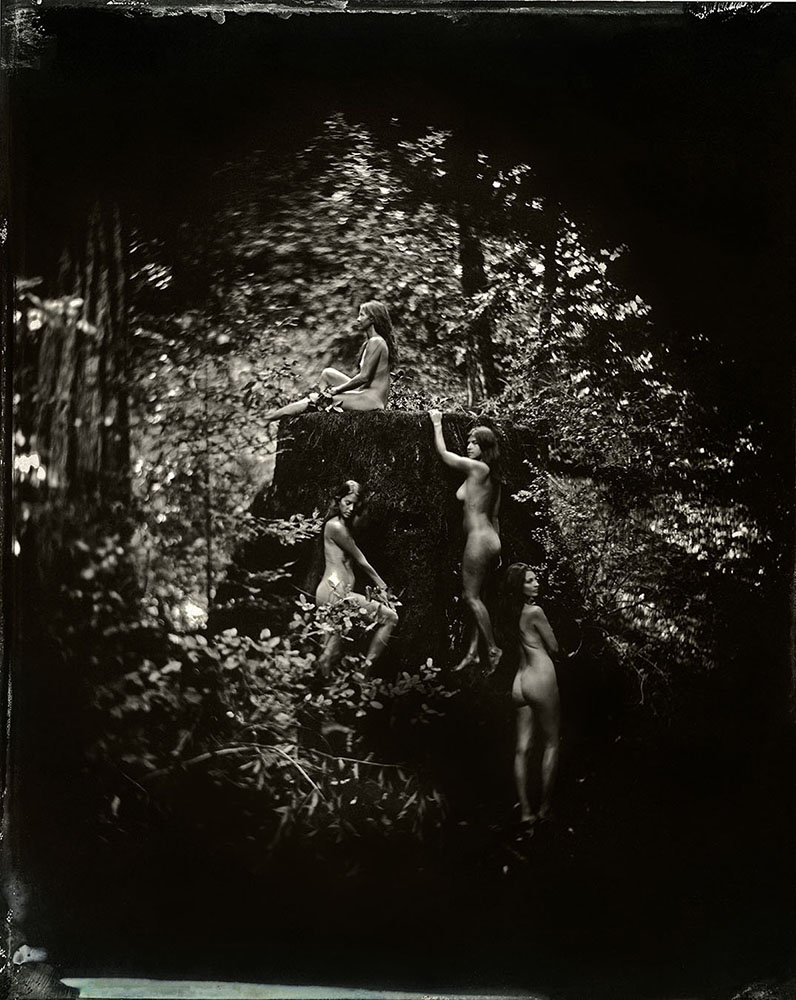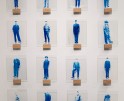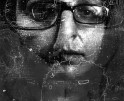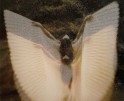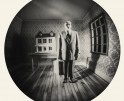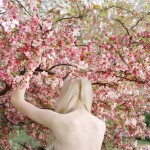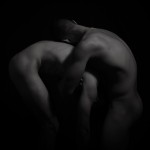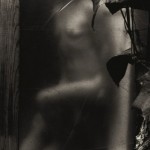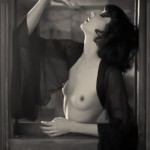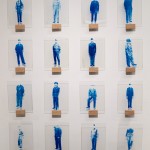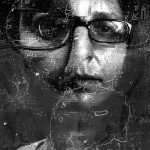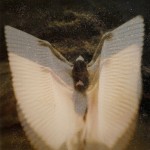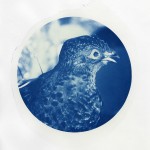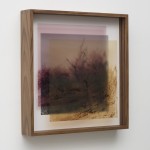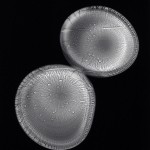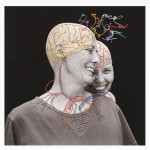Lindsey Ross: Mushroom People
Lindsey Ross is known for her monumental wet plate collodion photographs of the American West, yet with this series entitled Mushroom People, she shifts scale from her large landscapes to the forest floor. Her whimsical images play with photography’s potential to put in plain sight, that which is usually hidden. Forests are long thought to be mystical spaces; they are capable of hidden communication through the mycorrhizal network of which mushrooms are the fruiting bodies. These fungi straddle the line between life and death; they are neither, making them the perfect habitat for Ross’s otherworldly beings.
Although photography is burdened with preconceived notions of realistic representation and accurate documentation, the wet collodion process is only sensitive to blue and ultraviolet wavelengths. It omits the information found in other spectrums while revealing what is often unseen. Much like Ross’s photographs, this process challenges us to dispel our disbelief and uncover the hidden mysteries of the natural world.
Upcoming exhibition include: Mushroom People, Telluride Arts HQ Gallery. August 2022 and Elemental Perspective, Thomas VanDyke Gallery, New York September 2022
Everyday humans are bombarded with information that forms their perception of reality. These versions of reality are incomplete. They omit vast amounts of information, among many things, the fairies in the mushroom forest.
The forest is filled with beings both seen and unseen; these fairies or elementals exist beneath humans’ visible perception. These images remind viewers of the wonder, idealism and bliss often found in nature.
Elementals exist in folklore throughout history in every culture and region. They may be small or large; they have different physical appearances and are strong, active, physical forces in their environment. Their unifying trait is their connection to nature.
The elemental world is like the human world: they are mischievous, jealous, act in self interest and make mistakes. Like humans, they are flawed.
In the 19th century the term “veracity of photography” was used to describe the objectivity of photography. This meant that what appeared in a photograph was true to life, existed in the physical world, and was synonymous with reality and science. It was visual proof of the existence of what was depicted in the photograph. Mushroom people employs the veracity of photography to show the viewer an unseen world.
Wet plate collodion process is only sensitive to blue and ultra violet wavelengths so it includes some information that is not in the visual spectrum and filters out certain wavelengths in the visible spectrum. This process functions as filter that show viewers what their eyes cannot see in reality adding and subtracting information from what they see.
Humans have specific impressions of what mushrooms are in their reality: they are small and on the ground, they are edible, delicate, harmless and have no central nervous system. But could there actually be unseen beings inhabiting a forest of mushrooms?
These images are intended to disrupt and cause viewers to be curious about other interpretations of reality based on a different set of information.
Lindsey Ross is a California-based artist who primarily works with large format photography and the 19th century process, wet-plate collodion. Ross started working in this process in 2011 and she quickly realized it was the ideal format for her artistic practice. The slow pace of collodion requires a presence and intimacy that connects Ross to both the physical and spiritual world.
In 2015, Ross rebuilt a 20x24in process camera from the 1920’s. She had always admired the work of William Henry Jackson and Carleton Watkins, who documented the American West in the same format in the late 19th century. Ross soon found herself documenting the American West as well but from the perspective of a woman in the 21st century.
Two years later, in 2017, Ross had a 32x24in Chamonix View Camera custom built. She wanted to create larger art objects allowing the viewer to step into the environment of the image.
Ross has participated in several artist residencies including Telluride Mountain Film Festival, The Squire Foundation and the Budapest Art Factory. Her work has most recently been exhibited at Andrew Smith Gallery in Tucson and Penumbra Foundation in New York City.
Posts on Lenscratch may not be reproduced without the permission of the Lenscratch staff and the photographer.
Recommended
-
The 2024 Lenscratch 3rd Place Student Prize Winner: Mehrdad MirzaieJuly 24th, 2024
-
Charles Shuford: Blue is For BoysJuly 12th, 2024
-
Sarah Lazure: SarahJuly 11th, 2024
-
Kirsten Hoving: Fabricated VisionsJuly 10th, 2024
-
Gary Owens: In the RoomJuly 9th, 2024

